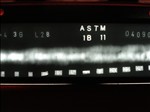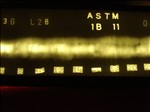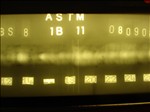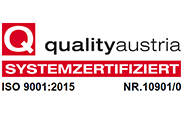 RT - Radiographic testing RT - Radiographic testing

Radiographic testing
The radiographic testing method uses an imaging technique of non-destructive testing for the illustration of differences in materials. By means of a proper emitter (X-ray tube or gamma emitting nuclides such as Selen75 or Iridium-192) the density of the tested object is imaged on a radiographic film. A projected image of the tested object appears on the radiographic film. The different shades of black indicate deviant material thickness or -density. The thicker or denser an object, the fewer radiation can penetrate and the brighter it appears on the radiographic film.
Scope
Radiographic testing (abbreviation RT acc. EN 473) is used for detecting bulky internal and external discontinuities. If there are differences in density between the discontinuity and the testing object a defect is detectable. Even fine cracks can be detected with the corresponding irradiation angle. The detection of these details depends on the contrast and resolution. The contrast in turn is influenced by the thickness, the density, the mass as well as the atomic number of the tested material given quality of the radiator, level of energy and the resolution and type of the film.
The method is a standard procedure, especially for the examination of safety-relevant components such as welds (EN 1435), as well as safety-relevant castings (EN 12681 and EN 444) e.g. in power plants.
Picture gallery
  
|





